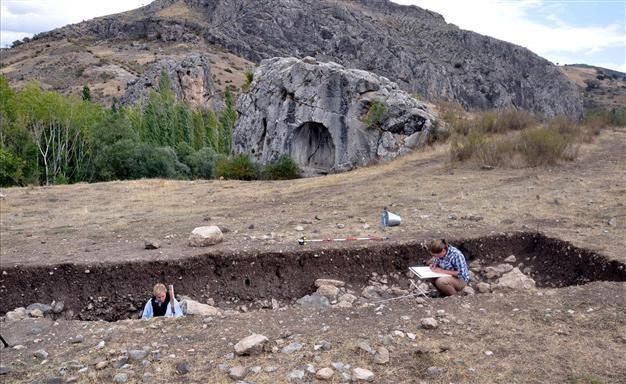Roman-era traces discovered in Hittite capital
ÇORUM – Anadolu Agency

The structure is thought to be been built in the second century A.D. AA Photo
A monumental Roman-era structure 20 meters in width and 40 meters in length has been discovered in excavations at Hattusa, the capital of the Hittite civilization.
Works in Hattusa began in 1906 and have been continuing for 108 years, according to Assistant Professor Andreas Schachner, the head of the excavations. He said the current team came to Hattusa seeking the Hittites, but they did not focus only on one time period.
This year’s completed work in the ancient city unearthed a monumental structure called “Lower City” in the northern part of the city.
“The most surprising result of this year’s work is that we partially unearthed the Roman era. We reached a structure that fills a gap in the field of science and tourism. We knew that there was a graveyard in this, area but we did not where the settlement was. We were lucky this year,” Schachner said.
He said the structure might have been built in the second century A.D. “We learned this from the technic used in the construction. Khorasan mortar was used here. Then it is seen that that this area was used for a different function. We understand that from two coins found here,” he added.
Schachner also said the excavation focused on discovering the function of the structure, if it had not been a church. The area’s size indicates it might have been a gathering place for various purposes. Schachner said that understanding the monumental structure would fill a gap in knowledge of the area’s cultural progression.
